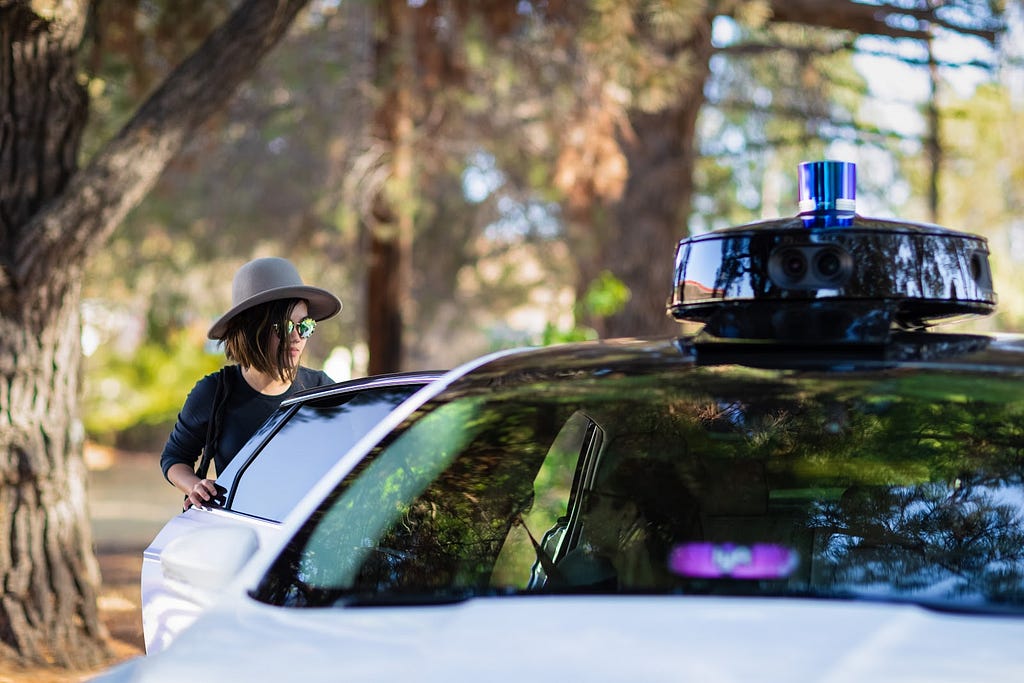
By John Maddox, Head of Autonomous Vehicle Safety
Lyft’s mission is to improve people’s lives with the world’s best transportation. To us, that means putting people first and focusing on safety. Today’s transportation system has significant room for improvement. In 2018, 36,560 people died on our nation’s roads, according to the National Highway Traffic Safety Administration, including disturbing increases for vulnerable road users (VRUs). Despite the tragedy individual families face, society accepts these numbers as “safe”. We think there is an opportunity for a better way.
This company was founded as an innovator in providing access to transportation, and we see a future that employs technology to dramatically reduce the impact of human error on the safety of our roads. Lyft envisions cities designed for people, including a continuous presence of pedestrian and micro-mobility road users. We believe that self-driving cars will be a critical component of a safer transportation system, and we intend to always be thoughtful, diligent, and collaborative as we get there.
Committed to Every Road User
Developing self-driving cars isn’t about cars at all — it’s about getting people around, safely. Lyft is a technology-enabled transportation ecosystem with vehicles, bikes, scooters, transit integration, and sometimes, just walking. That means our entire company is committed to the safety of all road users, especially VRUs, and we’re leveraging insights from across our business to pay special attention to VRU safety in our development of autonomous vehicles (AVs).
Our Principled, Thoughtful Safety Approach
Today, we published a Voluntary Safety Self-Assessment (VSSA) to inform regulators, Lyft riders, stakeholders, and the public of Lyft’s principles and thoughtful approach for developing self-driving technology. The following are the core aspects of our safety approach:
- Focus on customer safety and trust. The trust of millions of Lyft riders and drivers has been our priority since day one. Lyft applies consumer insights to ensure our riders feel safe and comfortable when they engage with our technology. In Lyft’s self-driving cars, we intend to earn that trust by providing pre-ride and in-app education and knowledgeable support 24/7 to riders, as we do today in self-driving rides through Lyft’s partners.
- Take a systematic approach and test conservatively. Lyft uses a holistic and iterative systems safety approach to ensure the safety of our testing program, which includes simulation, closed-course testing, and on-road operations. At this stage, we operate our AVs with rigorously-trained human safety operators and co-pilots for complete coverage of tasks and a constant state of vigilance. We focus on data and objective metrics for safety, and pay special attention to vulnerable road users.
- Collaborate with the industry and regulators. We believe all AV developers and stakeholders must collaborate and share best practices to create a system that is safe, effective, and transparent. Lyft is a core member of the Automated Vehicle Safety Consortium (AVSC), driving the creation of best practices for industry metrics to further safety of self-driving vehicles. We’re also a founding Board member of the Self-Driving Coalition for Safer Streets, which works with lawmakers, regulators and the public, and enthusiastic members of organizations like Partners for Automated Vehicle Education (PAVE), contributing insights for consumer education.
The foundation of Lyft is providing access to safe and reliable transportation, and we’re proud of the innovations we’ve made to date. Self-driving is another societal shift that we are working to introduce, and we intend to do so with safety at the heart of our development every day.
Read Lyft’s Voluntary Safety Self-Assessment.
Lyft’s Approach to Autonomous Vehicle Safety was originally published in Lyft Level 5 on Medium, where people are continuing the conversation by highlighting and responding to this story.